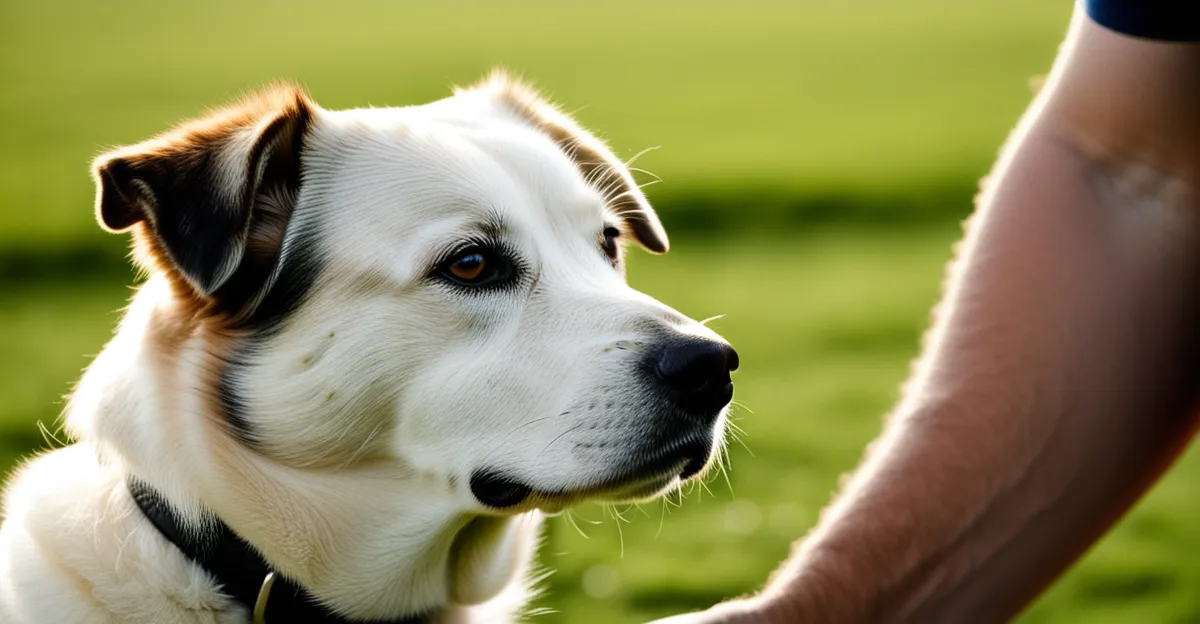Current Landscape of Pet Ownership in the UK
Examining UK pet statistics reveals a dynamic and diverse pet population. Recent data highlights that pet ownership in the UK continues to grow, reflecting evolving lifestyles. Dogs and cats dominate the scene, with dogs slightly leading in popularity because of their companionship and active engagement requirements. However, smaller pets like rabbits and guinea pigs also maintain a stable presence.
Notably, UK pet population trends show regional variations. Urban areas often lean towards smaller, indoor-friendly pets due to space constraints, while rural regions favor larger animals such as dogs. Demographic factors, including age and household composition, significantly influence pet choices. Younger populations show increased interest in pets like cats for their independent nature, while families may opt for dogs or other interactive animals.
Topic to read : Why Should You Consider Adopting a Pet in the UK?
Gender and income levels also play a role. Higher-income households appear more likely to invest in pets requiring specialized care. These pet ownership trends signal shifts in societal values toward animal welfare and companionship, fostering more informed and responsible ownership practices across the UK. This data-driven snapshot helps professionals and enthusiasts understand the current pet ownership landscape more comprehensively.
Historical Shifts in Pet Ownership
Understanding the history of pet ownership UK reveals significant transformations over time. In early decades, pet ownership was often limited to working animals, like dogs and cats for practical roles, rather than companionship. With industrialization and urbanization, the role of pets evolved, leading to a rise in pets kept primarily for emotional support and leisure.
In the same genre : How Can Pets Contribute to reducing loneliness in urban areas?
Changes in pet trends are marked by steady increases in pet populations since the mid-20th century, reflecting improved living standards and shifting societal values. For example, cats and dogs transitioned from outdoor or barn animals to cherished indoor family members. This shift is supported by pet ownership evolution data, highlighting increased spending on pet care, nutrition, and health.
Cultural attitudes towards pets have also softened, emphasizing welfare and rights more clearly than in earlier times. The rise of animal welfare organizations and stricter legislation reflect this trend. Comparing past and present ownership rates, the modern UK sees more diversified pet populations, including smaller mammals and exotic species.
This historical perspective enriches understanding of the pet ownership evolution by showing how social changes influence pets’ roles from utility to emotional companions.
Social and Economic Influences on Trends
Understanding socioeconomic factors UK is vital for grasping changes in pet ownership patterns. Economic stability and employment status directly impact individuals’ ability to care for pets. During prosperous periods, people often invest more in pet health, nutrition, and leisure, while economic downturns may reduce ownership rates or shift preferences toward less demanding pets.
Family structure also plays a significant role. Single-person households or couples without children might prefer smaller pets, such as cats or rabbits, due to convenience, whereas families often choose dogs for their interactive qualities. Urbanization influences these choices further, as limited living space in cities favors smaller or indoor pets compared to rural areas where outdoor space allows for larger animals.
Housing policies affect ownership too. Rental agreements and building regulations may restrict pet types or sizes, influencing potential owners’ decisions. Therefore, these social and economic factors intertwine, shaping pet ownership in the UK and altering pet population trends over time. Recognizing these influences helps explain regional variations and demographic preferences observed in current ownership data.
Social and Economic Influences on Trends
Economic factors play a crucial role in shaping pet ownership in the UK. Fluctuations in income and employment directly impact decisions to acquire and care for pets. During times of financial stability, households are more likely to invest in pets, including those requiring specialized care, while economic downturns often lead to reduced pet adoption rates or increased relinquishment.
Family structure also influences pet population trends. Single-person households may prefer pets with lower maintenance needs, such as cats or small mammals, while larger families often choose dogs due to their interactive nature. Urbanization intensifies these patterns. Limited living space and busy lifestyles in cities favor smaller, more manageable pets, aligning with broader pet ownership in the UK trends showing regional preferences.
Housing policies, including rental agreements and restrictions on pet types, further affect ownership patterns. Many urban landlords limit the number or breed of pets allowed, influencing choices toward certain animals. Together, these socioeconomic factors UK highlight how economic conditions, social changes, and housing realities combine to shape the evolving landscape of pet ownership across the country.
Legislative and Regulatory Drivers
Understanding pet ownership laws UK is essential for grasping how legislation shapes the landscape of owning pets. Key animal welfare legislation includes the Animal Welfare Act 2006, which mandates owners to ensure the health, safety, and well-being of their pets. This law enforces responsibilities like proper nutrition, suitable living conditions, and protection from pain or suffering, thereby directly influencing care standards.
Regulations also include breed-specific restrictions and licensing requirements that impact the choice and management of pets. For example, certain dog breeds are banned or require special permits due to safety concerns. Local councils often enforce rules about pet numbers in households and noise control, which affects urban pet ownership patterns.
Licensing schemes help monitor and track pet populations, ensuring compliance with welfare standards and reducing abandonment. Moreover, new regulations increasingly address exotic and non-native species, aiming to prevent ecological disruptions. Together, these pet ownership laws UK and regulatory frameworks promote responsible ownership and safeguard animal welfare, molding the evolving pet population trends seen across the country.
The Role of Media and Popular Culture
Media influence on pet trends plays a significant role in shaping pet ownership in the UK. Television shows, films, and social media frequently spotlight specific animals, increasing their popularity. For example, a viral social media campaign or celebrity pet endorsement can boost interest in particular breeds or species, impacting UK pet statistics by driving demand.
Popular culture pets UK often feature in advertising campaigns, which cleverly tailor messages to encourage responsible pet ownership while promoting products. These campaigns can emphasize benefits such as companionship and emotional support, making pets more appealing, especially to younger demographics.
Moreover, the rise of social media platforms allows pet owners to share experiences, influencing trends through peer networks. This cultural visibility not only encourages ownership but also raises awareness about animal welfare. Consequently, pet population trends are increasingly linked to media portrayal and popular culture, which shape perceptions, foster emotional connections, and sometimes lead to surges in demand for specific pets that reflect current cultural moods.
The Role of Media and Popular Culture
Media influence on pet trends in the UK significantly shapes pet ownership in the UK by spotlighting certain species and breeds. Television shows, films, and social media platforms often glamorize specific pets, boosting their popularity among viewers. For instance, viral videos of trending dog breeds or exotic animals can quickly increase demand, reflecting clear media influence on pet trends.
Celebrity pet culture further amplifies this effect. Public figures showcasing their pets on social media engage fans and inspire adoption choices, altering pet population trends by elevating particular animals into symbols of status or lifestyle. Advertising also plays a pivotal role; campaigns promoting responsible pet ownership or specific products guide consumer behavior, indirectly influencing which pets are favored.
Together, these cultural forces—media portrayals, celebrity endorsements, and targeted advertising—create powerful feedback loops. They impact adoption rates and breed popularity, sometimes leading to sudden surges in demand that challenge welfare organizations. Understanding this pop culture pets UK aspect is essential for anticipating shifts in the pet market and promoting informed ownership decisions.
Current Landscape of Pet Ownership in the UK
Recent UK pet statistics reveal that dogs remain the most popular pet, followed closely by cats, reflecting their strong emotional bonds with owners. Smaller pets such as rabbits and guinea pigs also hold significant niches, especially in urban households where space limits larger animals.
Pet ownership in the UK shows clear demographic and regional variations. Urban residents tend to favor smaller, indoor pets due to limited living space and lifestyle constraints. In contrast, rural areas often see higher rates of dog ownership given the availability of outdoor areas. Age groups influence choices as younger people increasingly prefer low-maintenance pets like cats, while families opt for dogs for their interactive qualities.
Data on pet population trends further emphasize economic and social factors at play. Higher-income households are more likely to own multiple or exotic pets, reflecting broader shifts in lifestyle and disposable income. These statistics collectively depict a UK where pet ownership is diverse and evolving, shaped by practical considerations and changing societal values toward pet welfare and companionship.
Demographic Patterns and Differences
Diverse demographics pet ownership UK reveal significant patterns shaped by age, geography, and culture. Younger generations tend to prefer cats and smaller pets, valuing low-maintenance companions compatible with urban lifestyles. In contrast, older adults often favor dogs for their social engagement and emotional support.
Age and pet trends show that millennials, balancing busy schedules and smaller homes, lean towards pets that require less intensive care. Older demographics might have more time and space for dogs, contributing to higher dog ownership among retirees. These distinctions underscore how life stages directly influence pet preferences.
Urban versus rural differences are striking. Urban residents, constrained by limited space and stricter housing rules, favor smaller, indoor-friendly pets, aligning with growing UK pet statistics about cats and small mammals. Rural dwellers, benefiting from ample outdoor space, prefer larger breeds, particularly dogs, reflecting distinctive pet population trends based on residence.
Ethnic and cultural diversity further shapes ownership. Different communities may favor specific pets reflecting cultural values or traditions, adding complexity to the pet ownership in the UK landscape. Understanding these demographic nuances helps tailor policies and services to meet varied community needs effectively.









